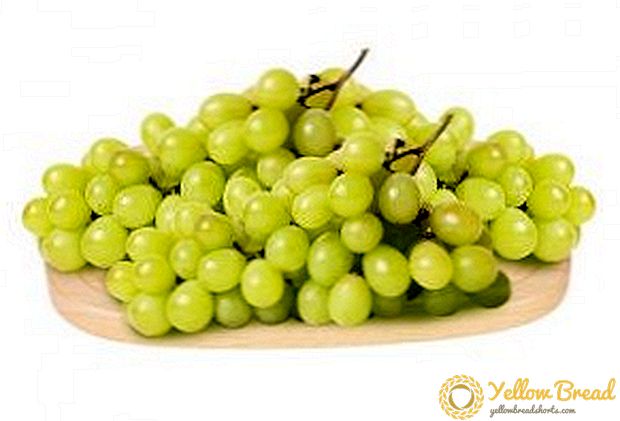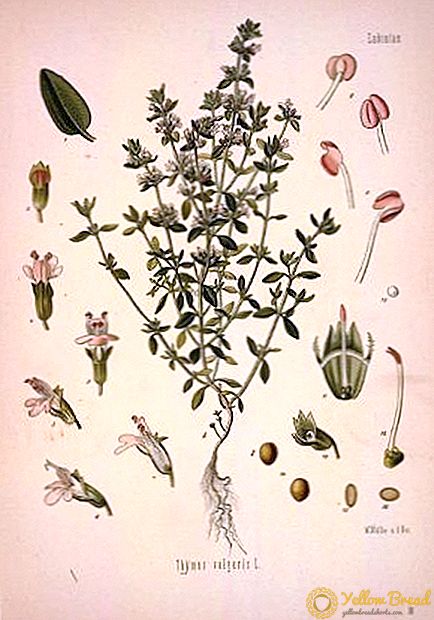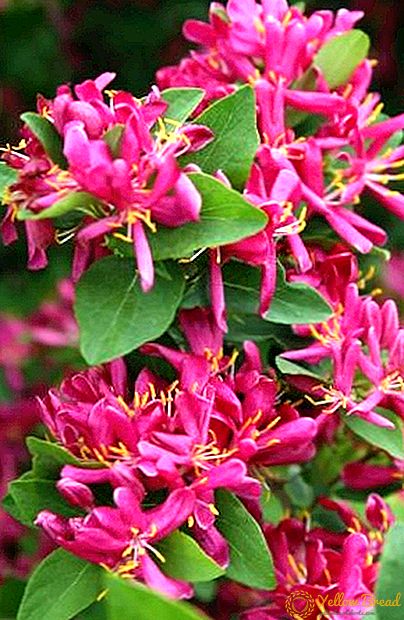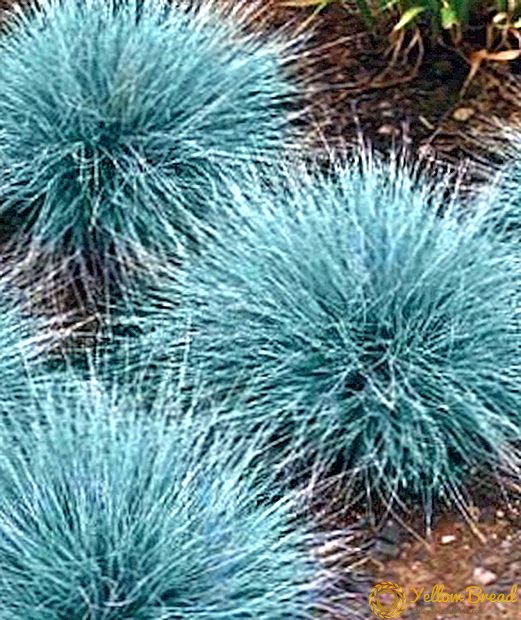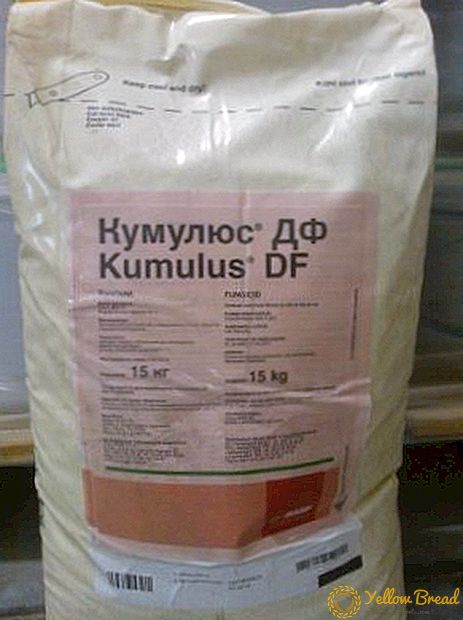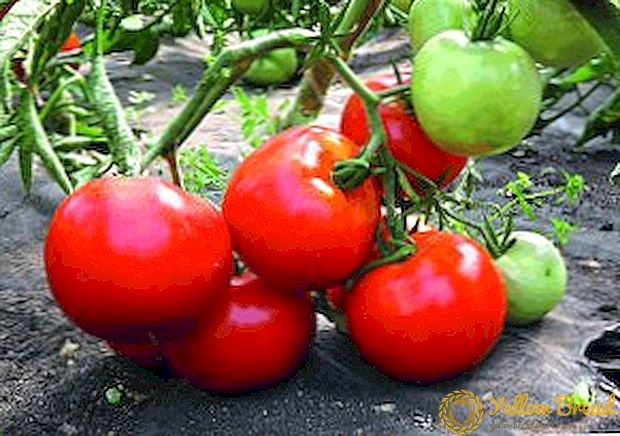 Cucumber "Nezhinsky" first appeared in the city of Nezhin (Ukraine), hence its name. For a long time, it was considered one of the best because of its taste and rather long storage in brine. Today, due to the appearance of a large number of other varieties and hybrids, it is a little forgotten, but in vain. Consider why this variety of cucumbers should grow in all beds.
Cucumber "Nezhinsky" first appeared in the city of Nezhin (Ukraine), hence its name. For a long time, it was considered one of the best because of its taste and rather long storage in brine. Today, due to the appearance of a large number of other varieties and hybrids, it is a little forgotten, but in vain. Consider why this variety of cucumbers should grow in all beds.
- Cucumber "Nezhinsky": description of the variety
- Pros and cons varieties
- How to plant cucumber seeds on the plot
- Timing and location selection
- Good and bad predecessors
- The optimal scheme for sowing seeds
- Care and cultivation of cucumbers "Nezhinsky"
- Crop shelter
- Watering, loosening and hilling bushes
- Fertilization
- Spraying and protection from pests and diseases
- Harvesting and storage of cucumber harvest
Cucumber "Nezhinsky": description of the variety
Characteristics of cucumber "Nezhinsky" known to all gardeners professionals:
- In terms of ripening, it is rather middle-late or late, depending on the landing time.
- Depending on the climatic conditions, the crop begins to appear 50 days after germination.
- The flesh of the fruit is juicy, dense and at the same time sweetish.
- The peel is thin, tuberous with small black spikes.
- Cucumbers grow intensively, sometimes the length of the lashes reaches a height of 2 m. At the same time, the number of shoots is estimated at two dozen.
- Apply the fruit in different ways, using fresh, fermenting or canning.
Pros and cons varieties
Popularity varieties cucumber "Nezhinsky" due to the following positive reviews:
- Excellent taste.
- Good presentation and transportability.
- Long and abundant fruiting.
- The possibility of growing in any soil.
- High drought tolerance and disease resistance.
How to plant cucumber seeds on the plot
Many newcomers are interested in how to plant cucumbers in order to get the maximum result at the end of the season. Professionals are confident that it is important before planting to conduct a seed germination test and processing against bacteria andharmful fungi.
To do this, they are placed in water with a temperature of 25 ° C per day, while the liquid must sometimes be changed. At the expiration of time, everything is spread on gauze, which is pre-moistened with water.
After they provide optimal conditions for germination: light, temperature, humidity. After a while, the seeds will begin to spit, and you will see which of them can be planted, and which ones it is better to throw out immediately.
Timing and location selection
Properly planting cucumbers in open ground is carried out not earlier than the end of May - the beginning of June. Regardless of the type of disembarkation, it is important to preliminarily prepare a place for a future garden bed.
The best choice is the preliminary digging of the earth to a depth of 20 cm with the removal of all weeds. This makes it possible to improve the quality of the soil.
It is known that high yields can be achieved with the help of warm beds, which are created by applying organic fertilizers in the autumn. Good neighbors for cucumbers - legumes, leafy salads, peppers, eggplants, as well as radishes and dill.
Good and bad predecessors
To obtain a good harvest, it is important that the predecessors of cucumbers grew in the open field at the site of the future planting - respect for crop rotation. Professionals claim that cucumbers cannot be grown in one place for no more than 2 years in a row. Ideal predecessors - tomatoes, cabbage or potatoes. After pumpkin plants, as well as watermelons, zucchini or melons, planting cucumbers is undesirable.
The optimal scheme for sowing seeds
The standard for planting cucumbers is 50 × 30 cm. The recommended deepening is 3.5 cm. For planting, beds are made in which the rows are deepened to a depth of 5 cm. The distance between the rows is at least 15 cm. After sowing, seeds are covered with earth, ground out and watered.
Care and cultivation of cucumbers "Nezhinsky"
Growing cucumbers in the open field requires compliance with some mandatory conditions:
- Extermination of all weeds without damaging the cucumbers themselves.
- Systematic loosening of the soil to prevent the appearance of a crust.
- Growing shoots immediately need to be sent in the right direction, tying to arcs or sticks.
- Every 10 days to carry out feeding cucumbers.
- When harvesting it is important not to disturb the stems.

Crop shelter
In the first days and even weeks after planting, daytime temperatures may differ significantly from nighttime. When at night it does not rise above 15 ° C, it is recommended to cover planted cucumbers with foil or polyethylene.
Such manipulations will protect shoots from the cold. Most often, these sheds are made in the form of a small arc-shaped greenhouse. These devices can be purchased ready-made or made independently using arcs and agrofibre.
Watering, loosening and hilling bushes
Because of the peculiarities of the root system, cucumbers are moisture-loving plants. Most often, watering is carried out every 2 days, during too high a temperature it is allowed to do this in a day.
It is better to moisturize the land in the afternoon with the help of drip irrigation. The lack of water leads to darkening and fragility of the leaves, and its surplus negatively affects the growth of the lashes and the cucumbers themselves.It is useful to loosen the soil and easy hilling bushes when they have already reached the desired height.

Hilling is carried out to form new roots, to protect the entire root system from overheating in hot weather. This can only be done with moist soil that crumbles easily. Otherwise, you can harm the plants.
Fertilization
For the full development of cucumber varieties "Nezhinsky" it is recommended to use organic and mineral fertilizers. Professionals recommend alternating root and foliar dressing. Initially, it is recommended to fertilize the soil with quality compost.
When making humus proportion of 5 kg per 1 square. m. Do it before planting seeds. It is obligatory to feed the soil with phosphate or potash fertilizers. The calculation is carried out as follows: for 1 m 2300 g of ash, 150 g of potassium salt and 100 g of superphosphate.
Spraying and protection from pests and diseases
The main task in the cultivation of cucumber varieties "Nezhinsky" is to minimize the damage from pests and diseases. To do this, it is not always enough to provide good lighting and airing of the beds, sometimes you have to turn to tools that protect plants from pests and diseases.

When the first signs of powdery mildew appear, a mullein infusion is recommended: 1 l of the product and 20 g of urea are diluted for 10 liters. Everything is mixed, filtered and sprayed with the resulting solution vegetables.
When an anthracnose is detected, which causes yellow spots on the leaves and ulcers on the fruits, all are treated with Topaz. Root rot, which affects adult bushes, clean biologic "Trikhodermin".
Such a pest as aphids clean using a popular recipe. To create it take an infusion of soap and wood ash. Or prepare a solution of 25 g of chopped onion and garlic, which is placed in 5 liters of water.
The resulting solution is treated plants. Spider mite sucks the juice from the plant, which in a month will lead to the death of the plant. To combat it, the garden is treated with a solution based on soap and infusion of celandine.
Harvesting and storage of cucumber harvest
When cucumbers ripen, many people have a question: "How to properly collect and, most importantly, store them?" Experienced gardeners are confident that it is better to harvest in the morning or in the evening, when sun activity is minimal.
It is important to immediately pick up the cucumbers in the shade. During maximum fructification, it is recommended to hold the collection every 2 days - such a schedule will allow you not to waste the power of the plant on old cucumbers and gives you the opportunity to grow new ones.
Fruits that are planned to be stored in the future should be collected so that between these actions the minimum period of time passes. For storage, it is important that a peduncle remains on a picked cucumber, and there should be no damage on them. It is not recommended to wash them either, since such manipulations will destroy their natural protective film.

For long-term storage of the crop in fresh you need to adhere to the following rules:
- Do not wrap tightly in the film, the fruits need fresh air.
- Do not store near other fruits and vegetables that produce ethylene.
- Do not create sudden changes in temperature.
- Limit evaporation of moisture.

